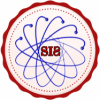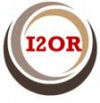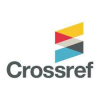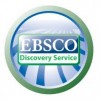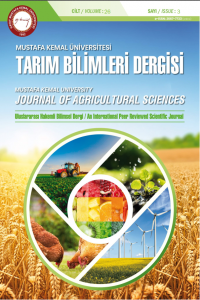Research Article
Aim & Scope
"Mustafa Kemal Üniversitesi Tarım Bilimleri Dergisi" (Mustafa Kemal University Journal of Agricultural Sciense (MKUJAS) is an international peer-reviewed open access journal published as three annually (April, August and December issues). Its primarily goal is to publish research articles on new and emerging fields for providing future references to promote agricultural researches in the fields of Agriculture and Food Sciences at national and international levels.
MKUJAS primarily welcomes original Research Article, containing new insight into any aspect of Agricultural, Food Sciences&Technologies and Plant Biotechnologies that has NOT been published or considered for publication elsewhere. Journal also accepts limited number of invited Review Article, Research Note, Short Communication, and Case Report.
MKUJAS primarily accept submission and publication of genuine and innovative Research Article for regionally or globally in all areas of Agriculture, Food Sciences and Plant Biotechnologies such as; Agricultural Economics, Animal Science and Husbandry, Agricultural Biotechnology, Biosystem Engineering, Environmental Science, Field Crops, Food Science and Technologies, Horticulture, Plant Protection, Plant Biotechnologies.
Author Guidelines
INSTRUCTION FOR AUTHORS
The instructions for authors include information about preparing a manuscript for submission to the journal of interest, criteria for publication and the online submission process.
SUBMISSION and EDITORIAL PROCESS
Publishing
your research article in a journal is simple and efficient. MKUJAF uses online
submission system http://dergipark.org.tr/mkutbd Microsoft Word formats of Manuscript
(MS) should be submitted to the Editorial Office by Journal Online Submission
System.
· For Articles with multiple authors, we would expect a "corresponding author" to be responsible for the article during the refereeing process after submission.
· Corresponding author are welcome to suggest 4 suitable reviewers and/or request the exclusion of certain individuals when they submit their manuscripts. When suggesting reviewers, authors should make sure they are totally independent and not connected to the work in any way. It is strongly recommended to suggest a mix of reviewers from different countries and different institutions. When suggesting reviewers, the Corresponding Author must provide an institutional email address for each suggested reviewer, or, if this is not possible to include other means of verifying the identity such as a link to a personal homepage, a link to the publication record or a researcher or author ID in the submission letter. Please note that the Journal may not use the suggestions, but suggestions are appreciated and may help facilitate the peer review process.
· All responsibilities of the submitted or published manuscript belong to author(s) including plagiarism.
· New manuscripts sent to the Journal will be handled first by the Editorial Office who checks compliance with the guidelines to authors. The manuscript is assigned to a handling Editor by the Chief Editor, and goes through a rapid screening process at which stage a decision to reject or to go to full review is made. This step ensures a rapid rejection of unsuitable manuscripts for the journal.
· Manuscripts that go to full review are assigned a minimum of two reviewers. Reviewers are expected to complete review procedures for two months. Following the return of two reports, the handling Editor provides a report to the Chief Editor, who takes the decision to accept, revise or reject the manuscript. If revisions are required, author should finish this revision for a month and returned back to handling editor.
· Revised manuscripts are directly handled by the Chief Editor who decides whether or not the manuscript should go back to the handling Editor for additional comments from the reviewers.
· Following the return of a report from the handling Editor and reviewers, the Chief Editor makes the decision to accept, further revise or reject the manuscript.
· The review process takes maximum two months.
· Completed revised accepted is scheduled to publish according to acceptance time. For same author, only two papers are allowed to publish within the same issue of the each volume
Ethics of Animal Experimentation
· The Journal will only accept manuscripts in which there is evidence of the ethical use of animals or harmful substances. The care and use of experimental animals must comply with all relevant local animal welfare laws, guidelines and policies, and a statement of such compliance should be provided upon submission.
· Where possible, alternative procedures that replace the use of animals, either partially or completely, for example in vitro biological systems, should be used. Where this is not possible, the minimum number of animals should be used and pain and suffering reduced, consistent with attaining the scientific objectives of the study. All reasonable steps must be taken to ensure the humane treatment of animals, so as to minimize discomfort, distress and pain.
· Animals in pain or moribund should be painlessly killed according to local euthanasia regulations. The Journal encourages corresponding authors of manuscripts involving animal research to refer to the ARRIVE guidelines before submission of a manuscript.
Please ensure to upload Ethic Declaration Form (for both animal-human experiments and questionnaire based studies) as signed by corresponding author.
You may download this form from here.
TYPES OF PAPERS
Standard full-length Research Articles: These should describe new and carefully confirmed findings including experimental procedures. A paper of this nature should contain the Abstract, Key words, Abbreviations, Introduction, Materials and Methods, Results, Discussion (or Results and Discussion), Acknowledgements, References, Tables, and Legends to figures. A typical standard paper contains 15–20 manuscript pages.
Review Articles: This should give an overview of a topical field of interest for a wide spectrum of readers in Agriculture and Food Sciences and should contain the abstract, topical sections and subsections, and references. We would prefer to see a distillation of early and present work within the field to show progress and explain the present interest and relevance. The manuscript should not be simply a review of past work or be concentrated largely on unpublished results. Reviews should be concise and no longer than 12-18 manuscript pages.
Technical Note / Short Communication: It must not exceed 6-12 manuscript pages (without figures) and must contain the Abstract, Key words, Abbreviations, the core of the paper, Acknowledgements, References, Tables, and Legends to figures. It should report a completed work but not preliminary findings.
Case Report: It must not exceed 1 manuscript pages (without figures) and must contain the brief introduction, method, results and conclusion for new plant disease, plant species etc for Country. It should report a completed work but not preliminary findings.
FORMAT DETAILS
Manuscript Style
Sample manuscript may be downloaded from here.
All manuscript should be clearly written in a concise grammatical correct Turkish or English manner. If English is not your first language, please ask an English-speaking colleague to proofread your article prior to submission to ensure it is of a high standard and conforms to a high level of scientific writing. Calibri font style with font size 11 should be used. The entire manuscript should be typed 1.5 spaced, with margins of 2 cm each side. All pages and lines should be numbered consecutively. Indent new paragraphs. The style of heading and subheading should be as follows:
The first heading should be left, justified bold and
in uppercase letters.
The first sub-heading(s) should be left justified,
bold, italic and title case.
Manuscripts that do not conform to these requirements
and manuscript format may be returned to the author for correction.
The format of the manuscript should be as follows:
Cover Page:
The title page should be submitted as separate file
containing the following information; Sample cover page may be downloaded from here.
Full title of the manuscript (Calibri font, 12 size), and full names (Calibri font, 11 size) and addresses of all authors (Calibri font, 10 size). Present the authors’ affiliation addresses (where the actual work was done) below the names. Indicate all affiliations with a superscript number immediately after the author’s name and in front of the appropriate address.
Asterisk should be used for the corresponding author with his/her name, full postal address, telephone, mobile phone (if applicable), fax numbers, e-mail address.
ORCID ID:
The author(s) are required to provide their ORCID numbers at submission stage. ORCID is the provider of a persistent digital identifier that is unique to you. This distinguishes you from every other researcher, which is important when others have the same or similar names. Through integration in manuscript, it supports automated linkages between you and your professional activities ensuring that your work is recognized, and you get credit where it is due. Getting an ORCID ID is free, quick and easy to do through the ORCID registration page
Manuscript (Main text):
Title:
Title should be short and informative and written in sentence case.
Abstract:
The abstract must be brief, informative and self-explanatory and should be written in past tense. It must not exceed 300 words in length. Abstract should concisely summarize major findings of the investigation without excessive methodical and experimental details under the following four headings: Aims; Methods and Results; Conclusions; Significance and Impact of Study. Standard nomenclature should be used and abbreviations should be avoided.
Key words:
Immediately after the abstract, provide 3 to 5 keywords, avoiding general and plural terms and multiple concepts. Be sparing with abbreviations. These keywords will be used for indexing purposes.
Introduction:
The introduction should give a concise background and provide the rationale to the presented study. It should provide a clear statement of the problem and should be understandable to colleagues from a broad range of scientific disciplines.
Materials and Methods:
This should give detailed and sufficient information of materials and procedures used to allow experiments to be reproduced. Previously published procedures and sources of laboratory procedures should be cited. Information on the equipment model, manufacturer’s name and address including the city, province/state and country should be provided. The procedures should be written in past tense and should consist of paragraphs with individual methods
Results and Discussion:
This should describe the design of the experiment and the obtained results. All tables, figures, graphs, statistical analyses and sample calculations should be presented in this section. Each results should be compared and discussed with related results of previous own or other updated studies, interprets them and draw conclusions. It can outline working hypotheses, theories, and applications.
Conclusions
Present major finding and their use in the related scientific area
Acknowledgement:
This is an optional section. Collate acknowledgements in a separate section at the end of the article before the references and do not, therefore, include them on the title page, as a footnote to the title or otherwise. Contributors who do not qualify as authors should be acknowledged and their particular contribution described List here (e.g., providing language help, writing assistance or proof reading the article, etc.). All sources of funding for the work reported, for all the authors, must be acknowledged. Both the research funder and the grant number (if applicable) should be given for each source of funds;
Disclosure of potential Conflicts Of Interest:
If no conflict of interest exists, then 'no conflict
of interest declared' should appear within this section. Otherwise, authors
should list all pertinent commercial and other relationships that may be
perceived as a potential source of conflict of interest.
If no Conflict of Interest is declared, this will be stated in the article using the following wording:
“Conflict of interest: The authors declare no conflict of interest.”
During submission, corresponding author should declare Conflict of Interest and Authorship Conformation Form;
· All authors have participated in (a) conception and design, or analysis and interpretation of the data; (b) drafting the article or revising it critically for important intellectual content; and (c) approval of the final version.
This manuscript has not been submitted to, nor is
under review at, another journal or other publishing venue.
The authors have no affiliation with any organization
with a direct or indirect financial interest in the subject matter discussed in
the manuscript.
The following authors have affiliations with
organizations with direct or indirect financial interest in the subject matter
discussed in the manuscript:
References:
A. Examples of citation in text
The use of an author's name (without initials) followed by a date or year of publication is used for references found in text.
For Single author's: Perry (2003) early proved that ... This is in agreement with the results obtained by several authors (Brown, 1999; Kramer, 2004; Smith, 2008).
For two author's: Zhang and Cheng (2001) reported that... This was later found to be incorrect (Kumar and Ahmed, 2000).
For three or more authors: When there are more than two authors, only the first author‘s name should be mentioned, followed by ’et al‘ as seen below.
Prince et al. (1990) stated that... Similar results were reported recently (Smith et al., 2003).
In the event that an author cited has had two or more works published during the same year, the reference, both in the text and in the reference list, should be identified by a lower case letter like ’a‘ and ’b‘ after the date to distinguish the works.
For Instance (Stephen, 2001a,b)
B. List of References
References should be listed at the end of the paper in alphabetical order. Journal names are abbreviated according to Chemical Abstracts. Citations of articles in preparation' or manuscript submitted', unpublished observations etc are not allowed. The author(s) name(s) and date or year of publication should prepared as follow:
In the Case of Journal papers:
Ramdial H, Hosein F, Rampersad SN (2016) First report of Fusarium incarnatum associated with fruit disease of bell peppers in Trinidad. Plant Dis. 100: 526.
Pulcrano G, Roscetto E, Iula VD, Panellis D, Rossano F, Catania MR (2012) MALDI-TOF mass spectrometry and microsatellite markers to evaluate Candida parapsilosis transmission in neonatal intensive care units. Eur. J. Clin. Microbiol. Infect. Dis. 31: 2919-2928.
In the Case of Book:
Aksu TA (1987) Genel Biyokimya. Akdeniz Üniversitesi, Tıp Fakültesi, Yayın No: 15, Antalya. 142s.
Leslie JF, Summerell BA (2006) The Fusarium Laboratory Manual. Blackwell Publishing, London. pp 220.
In the Case of Book Chapter:
Gupta RK (2017) Foodborne infectious diseases, In: Food Safety in the 21st Century. Public Health Perspective (Eds. Gupta RK, Dudeja P, Minhas AS), Academic Press, London. pp 13-28.
In the Case of Conference Paper:
Soylu S, Kara M, Üremiş İ, Kurt Ş, Soylu EM, Uysal A (2018) Determination of plant growth promoting traits of bacterial endophytes isolated and identified from invasive plant water Hyacinth Eichhornia crassipes in Orontes river of Turkey. 1. International Mediterranean Symposium, November 01-03, Mersin, Turkey. pp 349-350.
In the Case of Anonymous Report:
Anonymous (1996) Sağlık İstatistikleri Özeti. DİE, Yayın No: 1456, Ankara, 489 p.
In the Case of Thesis:
Soylu S (1998) Analysis of the responses of Arabidopsis thaliana to infection by Albugo candida and pathovars of Pseudomonas syringae. PhD Thesis, University of London, Wye College, Dept. of Biological Sciences, 236 p.
In the Case of Electronic WEB Source:
Farr DF, Rossman AY (2018) Fungal Databases, U.S. National Fungus Collections, ARS, USDA. Retrieved December 25, 2018, from https://nt.ars-grin.gov/fungaldatabases/
Tables
Tables should be self-explanatory without reference to the text. Each table should be given in the text, numbered consecutively in Arabic numerals with short descriptive titles and supplied with a heading and a legend. Tables are to be typed single-spaced throughout, including headings and footnotes. Columns are to be separated with horizontal lines only. Column headings should be brief, with units of measurement in parentheses. All abbreviations should be defined in footnotes. Use superscript letters (not numbers) for footnotes and keep footnotes to a minimum.
Figures
Figure legends should be typed in numerical order and given in the text Graphics should be prepared using applications capable of generating high resolution GIF, TIFF, JPEG or Powerpoint before pasting in the Microsoft Word manuscript file. Use Arabic numerals to designate figures and upper case letters for their parts (Fig 1). Begin each legend with a title and include sufficient description so that the figure is understandable without reading the text of the manuscript. Information given in legends should not be repeated in the text. Line figures should be supplied as sharp, black and white or color diagrams, drawn with a computer graphics package. Photographs should be sharp and magnifications should be indicated on photographs using a scale bar. Graphics should be supplied as high resolution (at least 300 d.p.i.) electronic files. Digital images supplied as low-resolution cannot be used. The legend should incorporate definitions of any symbols used and all abbreviations and units of measurement should be explained so that the figure can be understood without reference to the text.
Equations:
All the equations used in the text should be given separate numbering: Eq. (1), Eq. (2), etc. Meantime, any equation should be edited by using Microsoft Eq. 3.0 or high version of Microsoft Eq.
Units and Abbreviation:
Systeme Internationale (SI) units of measure and their abbreviations should be used; although certain non-SI units are also acceptable including liter (L) minute (min), day and year, last two of which should be spelled out in full. Whole number less than 10 are spelled out unless followed by a unit measurement. Otherwise, numbers are represented by numerals provided that they do not occur as the first word in a sentence.
Name of Species (Plant, Microorganism, Gene etc):
Common names of organism may be used provided that in every case the Latin binomial and authority are given in parenthesis following the first use in both the Abstract and body of the paper. Elsewhere the authority should be omitted. Generic name may be abbreviated where this can be done without ambiguity. Genus and species names should be in italics. The names of Genes should be in italics, and they should be described in terms of base pairs, nucleotides or other gene-specific terms.
Galley Proofs
Electronic proofs are sent via email-attachment to the corresponding author's as a PDF (Portable Document Format) file after the final review is completed and should be returned within 48 hours of receipt. Authors are required to note that this is the final version of the manuscript and no significant changes will be made at this stage other than typographical or minor clerical errors. Manuscript with alterations to the text and figures (other than minor errors) will be subjected to re-evaluation and authors may be charged for excessive alterations. Authors can freely download the PDF file from which they can print unlimited copies of their articles.
Plagiarism
Before the proof stage, we will check your manuscript by using databases/plagiarism detection program(s). If we find any bad results such as plagiarism for your submission, we will immediately reject your submission and remove it from publication order.
Ethical Principles and Publication Policy
1. GENERAL
Mustafa Kemal University Journal of Agricultural Sciences (MKU J. Agric.Sci.) aims to conform with the ethics statement of the Code of Conduct and the Guidelines of the Committee on Publication Ethics (COPE). In addition, the editorial policies of Mustafa Kemal University Journal of Agricultural Sciences also follow the ethical guidelines published in American Chemical Society (ACS) and the ORI Policy on Plagiarism of The US Office of Research Integrity. Publisher, editors, editorial board members, reviewers and authors are expected to comply with these guidelines and be expected to accept.
All manuscripts submitted to Mustafa Kemal University Journal of Agricultural Sciences undergo double blind peer review. An outline of this process is available on our Publishing System.
When author(s) submit a manuscript for publication in Mustafa Kemal University Journal of Agricultural Sciences, the authors have a responsibility to ensure that they have not plagiarized nor using data (published or unpublished), belonging to others without written permission. Plagiarism checks are carried out on manuscripts submitted to Mustafa Kemal University Journal of Agricultural Sciences via iThenticate or another similarity check portals such as “Web of Science”, “Scopus” etc. When plagiarism is detected, the relevant COPE guidelines are followed, COPE flowcharts.
2. RESPONSIBILITIES
2.1. Editors
1. The Editor-in-Chief of Mustafa Kemal University Journal of Agricultural Sciences makes editorial decisions on all peer-reviewed manuscript for publication.
2. Editors and the Editorial Board members are responsible for making decisions on the scientific content of the manuscripts submitted to Mustafa Kemal University Journal of Agricultural Sciences.
3. Editors and the Editorial Board members must evaluate manuscript for its scientific quality, free from any sort of biased decisions based on discrimination of race, religion, gender, disability, age, national origin, sexual orientation, gender identity, gender expression, geographical origin, or religion of the author(s).
4. Editors and the Editorial Board members must evaluate the submitted manuscripts objectively based on their academic and scientific value, free of any commercial or self-interests (i.e., conflict of interest).
5. Editors and the Editorial Board members must preserve the promoting research rectitude.
6. Editors and the Editorial Board members must not disclose any information on the submitted manuscripts before publication of the manuscript.
7. The Editorial Board members will not use content disclosed in a submitted manuscript for their own research without the author’s prior written consent.
2.2. Reviewers
All manuscripts submitted to Mustafa Kemal University Journal of Agricultural Sciences undergo single blind peer review. An outline of this process is available on our Publishing System. Reviewers should consider the COPE Ethical Guidelines for Peer Reviewers before accepting to review a paper and throughout the review process. Reviewers may not undertake a peer review on a submission if you are unable to do so objectively.
1. Reviewers will keep all manuscripts confidential and treat them as privileged information.
2. Reviewers must provide a detailed, constructive, and unbiased evaluation report on the scientific content of the manuscript.
3. Reviewers should indicate whether the writing is relevant, concise, clear and evaluating the originality and scientific accuracy in their evaluation report.
4. The invitation sent to you provides a date when we require to have received your comments.
5. Reviewers will notify the editor about any financial or personal conflict of interest and declining to review the manuscript when a possibility of such a conflict exists.
6. Reviewers will inform the Editor if the single-blind nature of the peer-review has been compromised.
7. Reviewers must notify the editor of any violation of ethical treatment of animal or human subjects in their evaluation of the submitted manuscripts.
8. Reviewers must notify the editor of any considerable similarity between the previously published article and any reviewed manuscript in their evaluation of submitted manuscripts.
9. Reviewers will complete their reviews within the allowed timeframe.
Peer reviewers should provide an objective critical evaluation of the paper in the broadest terms practicable. Reviewers need to make a recommendation to the Editor-in-Chief. Your report must contain a description of your reasons for that recommendation. If you believe the paper needs changes to be made before it is acceptable, please make suggestions on how to improve the paper. Likewise if you feel that a paper is not good enough and has no real prospects of being improved sufficiently to be published you should recommend rejection. You should also indicate if the manuscript requires its English grammar, punctuation or spelling to be corrected.
2.3. Authors
1. All manuscripts must be original work of the author(s). All the data or information reported in the manuscripts must be free from any kind of plagiarism. A zero tolerance approach will be taken to plagiarized manuscripts and they will not be accepted.
2. The manuscript should not have been published elsewhere or submitted for consideration to any other online or print journal(s) at the same time.
3. Authors may be asked to provide the raw data in connection with manuscripts for editorial review, and should prepare to provide public access to such data if possible.
4. Authorship of a manuscript should be limited to only authors who have made a significant contribution to the work.
5. Authors will disclose any financial or other conflict of interests that might influence the results of the manuscript and acknowledge individuals or organizations that have provided financial support for the research.
6. Authors should state the funding source (a commercial company, charity or government department, etc.) for any type of publication within the manuscript.
7. Any potential conflict of interest must be clearly acknowledged by authors.
8. Proper acknowledgements of others published work reported (individual/company/institution) must be included by authors. Permission must be obtained and furnished from other publishers before, if already published data is included in the submitted manuscript.
9. Authors are asked to sign an author warranty when they submit an article for publication in Mustafa Kemal University Journal of Agricultural Sciences. The wording of the warranty is as follows: “By agreeing to this declaration you certify that the submission of a manuscript implies that the work described in your manuscript has not been published previously, that it is not under consideration for publication elsewhere, that its publication is approved by all authors and tacitly or explicitly by the responsible authorities where the work was carried out, and that, if accepted, it will not be published elsewhere including electronically in the same form and in any other language. The author(s) have obtained permission for and acknowledged the source of any excerpts from other copyrighted works; and that to the best of your knowledge your manuscript contains no statements which are libelous, unlawful or in any way actionable. The use of someone else’s ideas or words in their original form or slightly changed without a proper citation is considered plagiarism. Even if a citation is given, if quotation marks (“…”) are not placed around words taken directly from another author’s work, the author is still guilty of plagiarism”.
2.4. Publisher
1. An agreed publisher work with Editors of Mustafa Kemal University Journal of Agricultural Sciences, defining clearly their relevant roles, in order to ensure appropriate decisions regarding publication procedures and maintaining the transparency of editorial decisions.
2. An agreed publisher ensures the integrity autonomy and originality of each published article with respect to the publication ethics and rectitude and timely publication of content.
Price Policy
Mustafa Kemal University Journal of Agricultural Sciences is an open access journal that does not charge article processing fee (evaluation fee or printing fee) from accepted articles, is internationally refereed and does not charge subscription fees for accessing articles.
Indexes
Journal Boards
Owner
Editor in Chief

Prof. Dr. Soner Soylu received his PhD degree from Wye College, University of London, UK in 1998. He has been working as a lecturer and researcher at Hatay Mustafa Kemal University, Faculty of Agriculture, Department of Plant Protection since 1998.
He has research experience in the field of Plant Pathology and has supervised many master's and doctoral theses and studies. In this field, he has been the coordinator of many projects funded by different domestic and foreign institutions.
He has published research articles, book chapters and conference papers in reputed journals on plant growth promoting endophytic and epiphytic bacterial isolates (PGPB) and characterization of molecular, biochemical and morphological interactions between plant pathogens and plant defense mechanisms, Molecular and morphological identification of bacterial and fungal plant pathogens, antimicrobial activity of natural antimicrobial substances such as essential oils and extracts, induced resistance to fungal and bacterial plant pathogens, beneficial antagonist fungal and bacterial pathogens and biological control of fungal and bacterial pathogens, .
In particular, he is an expert in the molecular identification of obligate disease agents such as soilborne fungal diseases, powdery mildew, mildew, rust in various crops and has published many first record plant disease agent reports for Turkey. For the first time in Turkey, he was involved in the establishment of the "Plant Health Clinic", which provides solution services directly to farmers for their problems related to diseases, pests and weeds.
His research articles published on various topics have been extensively cited worldwide and ranked among the "Top 10 Most Cited Articles" in the relevant journal category in the field of Agricultural Sciences. He serves as Editor-in-Chief, Editorial Board Member and Referee in many reputable and prestigious journals in his field.
Associate Editorial Board of Sections










 Web
Web

Editorial Advisory Board




 Web
Web

İbrahim Kahramanoğlu is an Associate Professor at the Faculty of Agricultural Sciences and Technologies, in the European University of Lefke (Turkish Republic of Northern Cyprus). He is expert in Horticultural Production, Postharvest Biology & Technology and Good Agricultural Practices. His main studies are about Postharvest Physiology and Handling of Fruits; Natural and Novel Technologies for Handling & Storage; Digital and Precision Farming (agri 4.0) for Sustainability; and Value Adding to Horticultural Crops.

Dr. Habib Ali, PhD in Agricultural Entomology and Insect Pest Control, currently serves as a faculty member at Khwaja Fareed University of Engineering and Information Technology in Rahim Yar Khan, Pakistan. His academic journey commenced at the University of Agriculture Faisalabad, where he specialized in Agricultural Entomology before completing his Ph.D. at Fujian Agriculture and Forestry University (FAFU) in China in December 2018. Dr. Ali is a dedicated researcher with a significant impact on the scientific community, evidenced by his 110 research papers published in reputable national and international journals with a collective impact factor of around 500. Moreover, he has authored 15 book chapters and published 05 books with esteemed publishers like Springer, Taylor and Francis, IntechOpen, and Elsevier. Dr. Ali's contributions have earned him prestigious awards such as the Best International Student of the Year and the Best Thesis Award from Plant protection, FAFU, China. He was also nominated for the World Scientist Index in 2021-23 and received the Council of Asian Science Editorship. In addition to his research, Dr. Ali actively engages in educational programs, faculty training, and international conferences while contributing to national and international research projects. His research interests span a wide range of topics including agricultural entomology, molecular entomology, bee health, microbial pathogenesis, biocontrol agents, and integrated pest management, reflecting his dedication to advancing knowledge in entomology and agriculture.







 Web
Web
Kyrgyz - Turkish Manas University, Faculty of Agriculture, Kyrgyz



 Web
Web
Dr. Ebrima S. Njie is a Senior Lecturer at the School of Agriculture and Environmental Sciences of the University of The Gambia. He a Gambian by Nationality and holds a Ph.D. in Horticulture from the University of Ankara Department of Horticulture in 2020. His research interest is in Horticulture, Seed Science, and agronomy of horticulture crops. He currently lectures varying courses in horticulture, seed science to undergraduate, and graduate students. He has also served a reviewer for a wide range of journals.





Dr. Muhamad Shakirin Mispan is currently a senior lecturer at the Institute of Biological Sciences, Faculty of Science, Universiti Malaya, teaching BSc courses including Ecology and Management of Weeds, Soil Ecology and Management, and Quantitative Ecology. He also teaches MSc courses including Applied Weed Science, Pest Management in Organic Crops, and Tropical Crop Management. He received a bachelor’s degree (BSc) in Ecology and Biodiversity in 2006 and a master’s degree (MSc) in Biology in 2010 from Universiti Malaya. He is a PhD holder in Biological Sciences from South Dakota State University, USA working on QTL mapping for weedy adaptive traits in rice; haplotype analysis for a major seed dormancy QTL region in rice; and seed longevity and photoperiod sensitivity in weedy rice. His current research focuses are mainly on the ecological genetics of weedy rice focusing on adaptation to various ecological systems, seedbank dynamics and longevity, environmental impact from various weed management, integration of sustainable agriculture for rice production, agroecology, and precision agriculture in rice farming.

Section Editors





 Web
Web




Lisans: Mustafa Kemal Üniversitesi Ziraat Fakültesi -1997
Yüksek Lisans: Mustafa Kemal Üniversitesi Fen Bilimleri Enstitüsü Tarla Bitkileri Anabilim Dalı- 2000
Doktora: Çukurova Üniversitesi Fen Bilimleri Enstitüsü Tarla Bitkileri Anabilim Dalı- 2006








 Web
Web



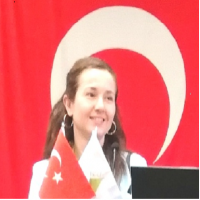



Layout Editors
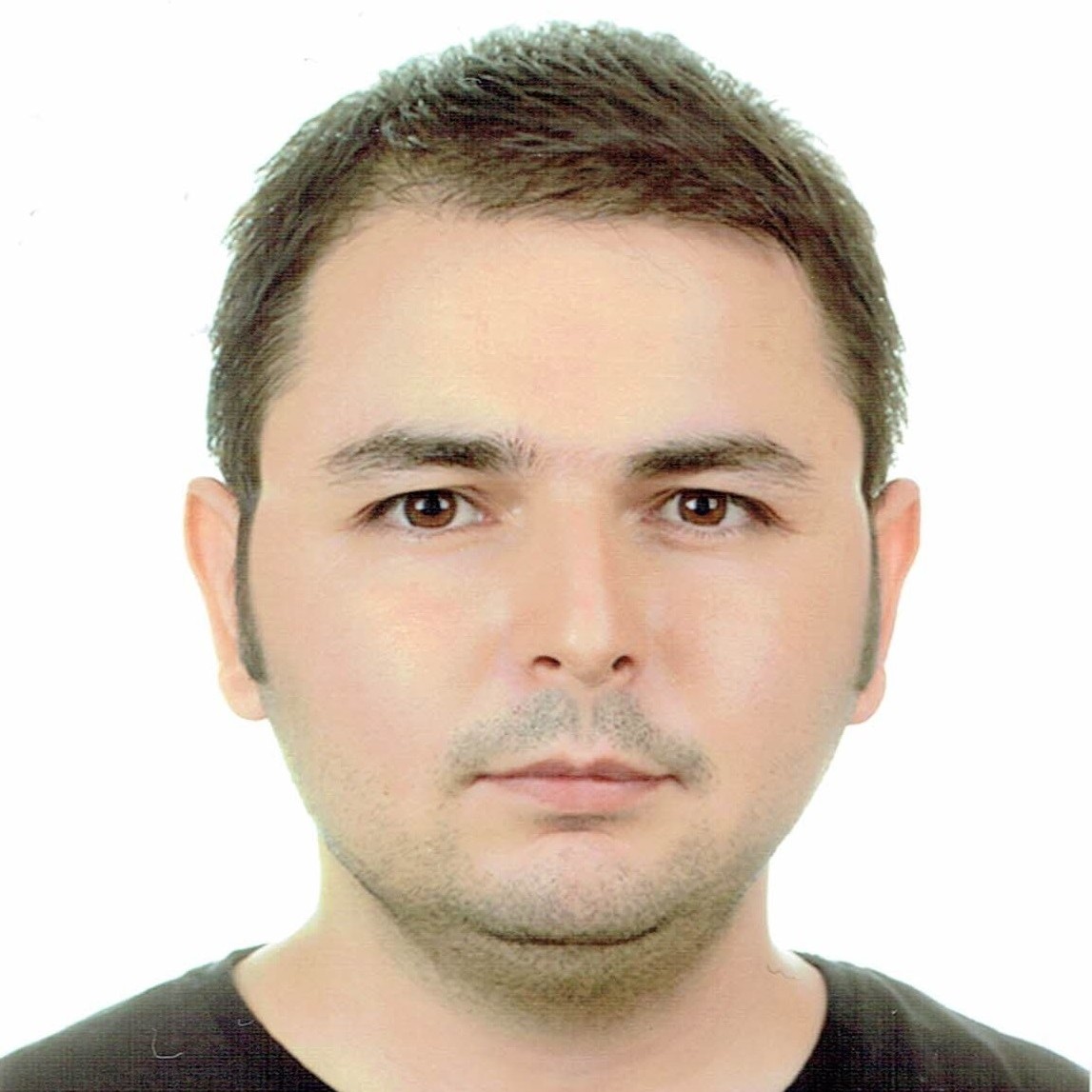






 Web
Web

 Web
Web



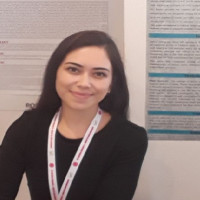














 Web
Web











 Web
Web





Language Editor















